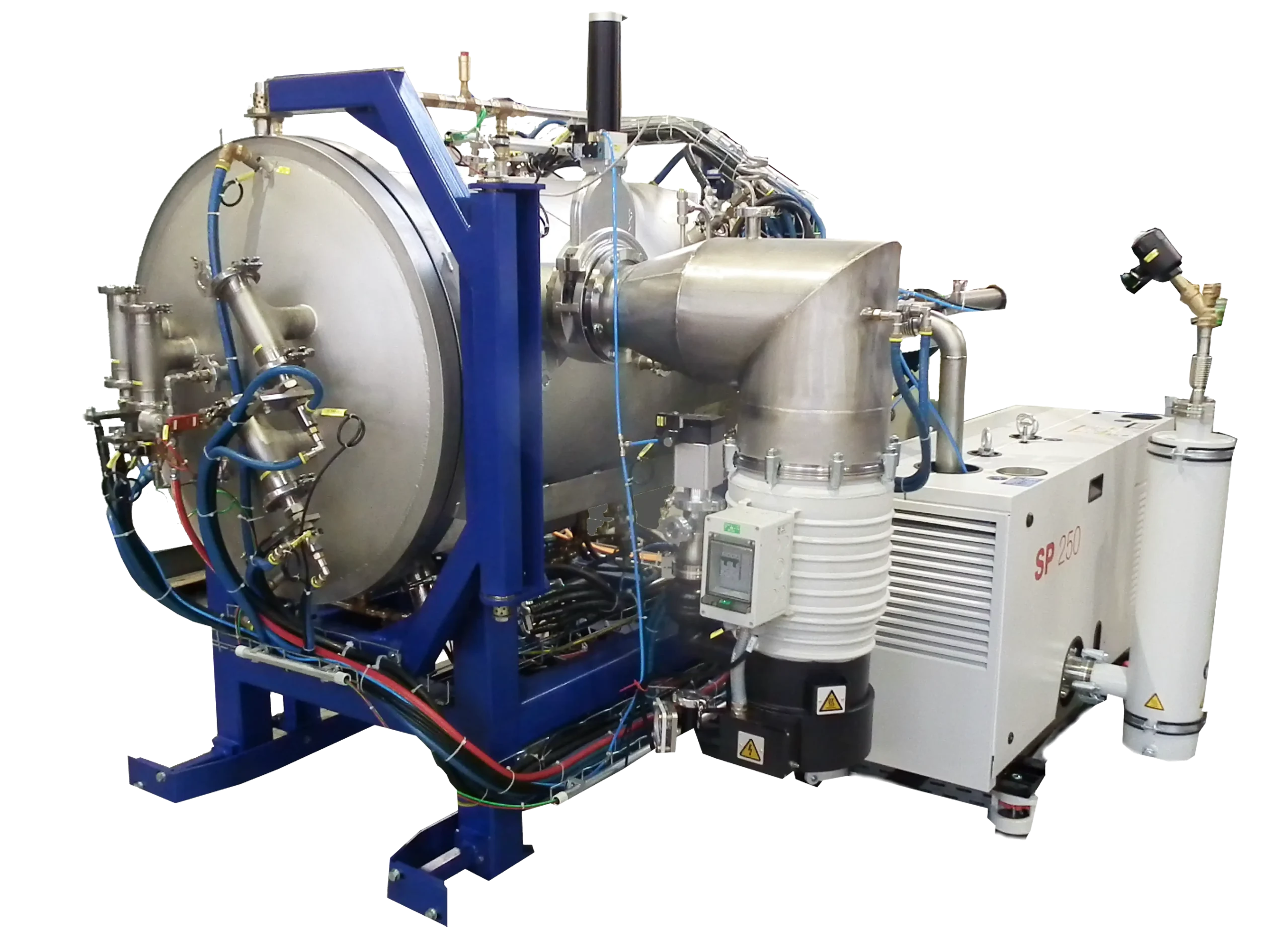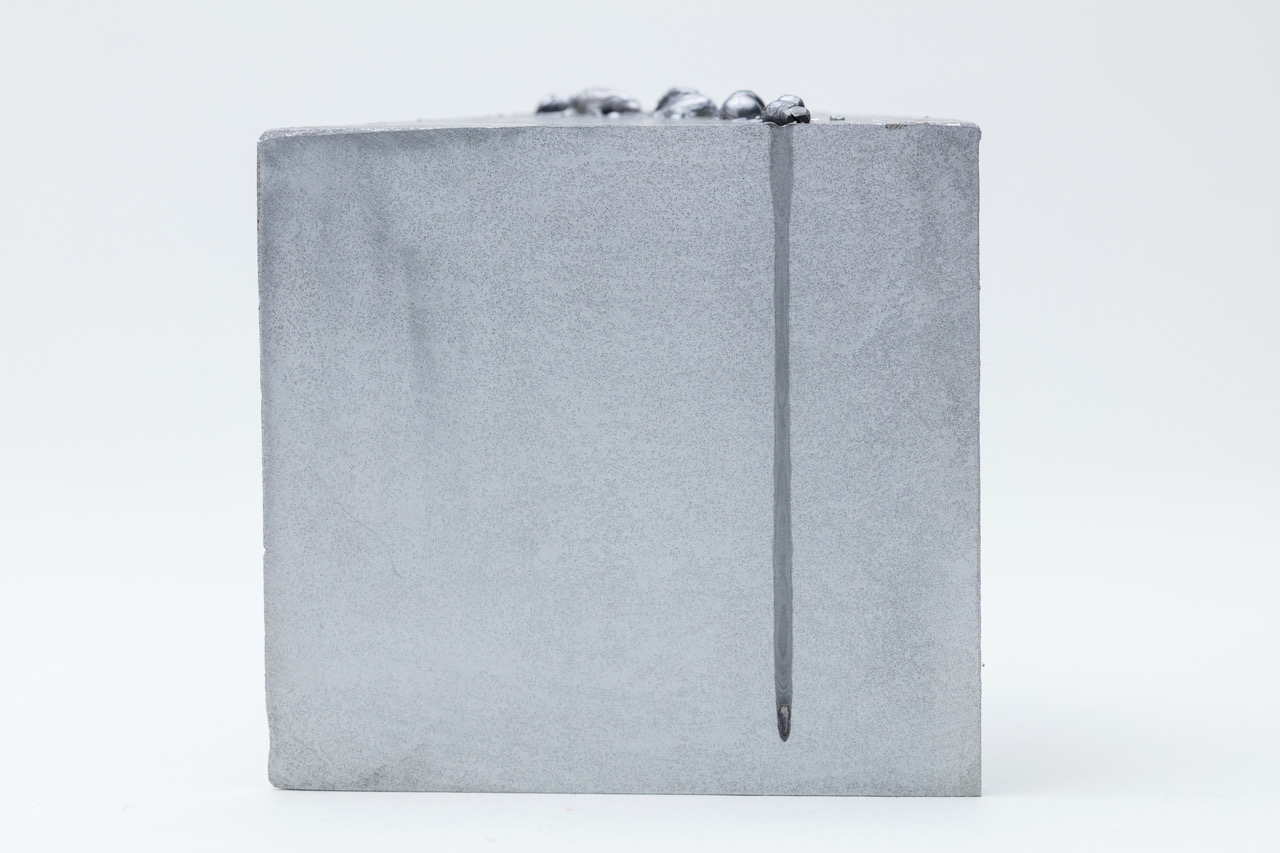Debinding and sintering are critical steps in the powder metallurgy of titanium alloys, particularly for applications in medical and aerospace industries, where stringent purity and mechanical performance requirements must be met (ASTM International, 2021).
In modern integrated furnace systems, debinding and sintering take place in the same furnace within a single furnace cycle. The parts loaded into the furnace are either brown parts or contain up to 3 wt% binder, as is typical for components produced by binder-jetting processes. This single-cycle approach eliminates intermediate handling, reduces contamination risks, and improves process efficiency by seamlessly transitioning from the debinding phase to the sintering phase under controlled vacuum or gas atmospheres.
Efficient Debinding Process
The debinding step is essential for removing binder materials from molded titanium parts before sintering. Incomplete debinding can lead to residual carbon contamination, negatively impacting mechanical properties and biocompatibility.
Thermal debinding is typically used, involving controlled heating to gradually decompose and volatilize the binder. The process must be carefully managed to avoid defects such as cracking, distortion, or contamination (Jones & Patel, 2021).
Gas Flow During Debinding
The debinding cycle of titanium parts is carefully managed by controlling temperature and atmosphere compositionwithin the furnace.
Key Aspects of Gas Flow
- Inert gas (typically argon (Ar)) is used, sometimes with partial pressure of hydrogen (H₂) or forming gas to facilitate binder removal.
- Partial pressure debinding is maintained at 10 to 50 mbar, reducing oxidation risks and ensuring efficient binder decomposition (Smith et al., 2022).
Ultimate Vacuum Level During Sintering
Achieving a high vacuum level during titanium sintering is essential to minimize contamination from atmospheric gases such as oxygen and nitrogen, which can form brittle phases (i.e., alpha case) within the material.
Vacuum Level Guidelines
- Typical vacuum range: 10⁻⁵ to 5⋅10⁻⁴ mbar
- Effect on sintering: Minimizes oxidation and nitrogen absorption, preserving mechanical integrity (Limberg et al., 2014).
Importance of Low Leak Rate in Vacuum Furnaces
A low leak rate in vacuum furnaces is critical for ensuring the highest purity standards in sintered titanium parts. Even minute leaks can introduce oxygen, nitrogen, or water vapor, leading to oxide and nitride formation, which degrade mechanical properties and biocompatibility (Grann, 2017).
Leak Rate Recommendations
For high-vacuum, high-purity sintering of reactive materials such as titanium, the industry standard is:
- ≤ 5⋅10⁻⁵ mbar·L/s, ensuring vacuum stability and preventing contamination (Valanezhad et al., 2019).
Exceeding this threshold can lead to increased oxygen and carbon content, which is particularly detrimental in medical and aerospace applications (ASTM B817, ASTM F136).
How to Maintain a Low Leak Rate
- Regularly inspect seals, flanges, and vacuum connections.
- Use helium mass spectrometry to detect microleaks.
- Employ high-integrity vacuum components to prevent outgassing.
- Perform proper bake-out procedures before sintering.
By following these vacuum integrity requirements, manufacturers ensure optimal sintering conditions, resulting in high-density, high-purity titanium components suitable for medical, aerospace, and industrial applications.
Superior Temperature Uniformity with the ISO Furnace Concept
The ISO Concept developed by MUT Advanced Heating GmbH represents an integrated approach to debinding and sintering in powder metallurgy and ceramic processing.
This technology combines hot-wall and cold-wall furnace designs, optimizing temperature uniformity, contamination control, and energy efficiency (Blüm, 2007).
Key Features of the ISO Concept
1. Dual Heating Zones
- The furnace consists of two heating systems:
- An external heating system outside the high-temperature sintering zone.
- An internal heating system within the sintering zone.
- This dual-zone approach improves thermal efficiency and process stability, ensuring even heat distribution.
2. Optimized Gas Flow and Contamination Control
- In debinding mode, the outer heating system is active, creating a temperature gradient from the exterior to the interior of the furnace.
- Binder gases are efficiently removed without contaminating the sintering chamber.
- In sintering mode, gas flow is reversed—flushing gas enters the inner chamber and is discharged outward, ensuring a clean atmosphere.
3. Superior Temperature Uniformity
- During sintering, the external heating system operates up to 800°C, which significantly reduces temperature gradients from the furnace core to the water-cooled outer jacket.
- This flattens the temperature gradient and minimizes thermal stress on components.
- Unlike conventional furnaces, the ISO Concept achieves more uniform heat distribution, improving microstructural homogeneity.
The ISO furnace usually produces parts with:
- Carbon impurities as low as 0.05 wt%
- Oxygen impurities as low as 0.01 wt%
- Highest yield strength with excellent elongation
For Ti-6Al-4V (Ti64), this results in:
- Yield strength up to 1050 MPa
- Elongation of 18%
Such results depend on the purity of the starting materials (Blüm, 2007).
Conclusion
By meticulously controlling debinding and sintering processes, manufacturers can produce high-purity titanium partsthat meet the rigorous demands of medical and aerospace industries. Advanced furnace technology, stringent vacuum conditions, and optimized process parameters ensure superior mechanical performance, low impurity levels, and high reliability in the final components.
References
- ASTM International. (2021). Standard Specification for Titanium and Titanium-6Al-4V Alloy Powder for Coatings of Surgical Implants (ASTM B817-21). ASTM International.
- Blüm, H. J. (2007). ISO Concept: Integrated Sintering Furnace. DKG, 84(11).
- Grann, M. (2017). Vacuum Leak Rate Control in Titanium Sintering. Materials Science Journal, 56(2), 133–142.
- Jones, M., & Patel, R. (2021). Advancements in Partial Pressure Debinding for Titanium Alloys. Journal of Powder Metallurgy, 56(3), 145–162.
- Limberg, W., et al. (2014). Metal Injection Moulding of Advanced Titanium Alloys. ResearchGate.
- Powder Metallurgy Utah. (2023). Sintering of Titanium Alloys.
- Smith, J., et al. (2022). Influence of Gas Composition on Titanium Powder Debinding. Materials Processing Research, 47(2), 98–112.
- Valanezhad, M., et al. (2019). Effect of Leak Rate on Sintered Titanium. Metallurgical Research, 42(5), 299–314.









